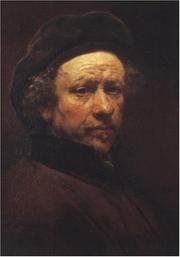| Listing 1 - 2 of 2 |
Sort by
|
Book
ISBN: 9781409420385 9781315261041 9781351953856 9781138273870 1409420388 Year: 2013 Publisher: Aldershot [etc.] Ashgate
Abstract | Keywords | Export | Availability | Bookmark
 Loading...
Loading...Choose an application
- Reference Manager
- EndNote
- RefWorks (Direct export to RefWorks)
Byzantine Art and Renaissance Europe discusses the cultural and artistic interaction between the Byzantine east and western Europe, from the sack of Constantinople by the Fourth Crusade in 1204 to the flourishing of post-Byzantine artistic workshops on Venetian Crete during the fifteenth and sixteenth centuries and the formation of icon collections in Renaissance Italy. The contributors examine the routes by which artistic interaction may have taken place, and explore the reception of Byzantine art in western Europe, analysing why artists and patrons were interested in ideas from the other side of the cultural and religious divide. In the first chapter, Lyn Rodley outlines the development of Byzantine art in the Palaiologan era and its relations with western culture. Hans Bloemsma then re-assesses the influence of Byzantine art on early Italian painting from the point of view of changing demands regarding religious images in Italy. In the first of two chapters on Venetian Crete, Angeliki Lymberopoulou evaluates the impact of the Venetian presence on the production of fresco decorations in regional Byzantine churches on the island. The next chapter, by Diana Newall, continues the exploration of Cretan art manufactured under the Venetians, shifting the focus to the bi-cultural society of the Cretan capital Candia and the rise of the post-Byzantine icon. Kim Woods then addresses the reception of Byzantine icons in western Europe in the late Middle Ages and their role as devotional objects in the Roman Catholic Church. Finally, Rembrandt Duits examines the status of Byzantine icons as collectors’ items in early Renaissance Italy. The inventories of the Medici family and other collectors reveal an appreciation for icons among Italian patrons, which suggests that received notions of Renaissance tastes may be in need of revision. The book thus offers new perspectives and insights and re-positions late and post-Byzantine art in a broader European cultural context.
Iconography --- Art --- anno 1400-1499 --- anno 1500-1599 --- Istanbul [city] --- Europe --- Art, Byzantine. --- Icons --- Renaissance. --- Art byzantin --- Icônes --- Renaissance --- Collectors and collecting --- Collectionneurs et collections --- Art, Byzantine --- Revival of letters --- Civilization --- History, Modern --- Civilization, Medieval --- Civilization, Modern --- Humanism --- Middle Ages --- Eikons --- Ikons --- Christian art and symbolism --- Christian saints in art --- Byzantine art --- Art, Medieval --- History --- Icônes --- Icons - Collectors and collecting - Europe

ISBN: 9781402044410 1402032803 9781402032806 1402044410 9024726131 902472614X 9024733391 9024727642 1402032765 9024727715 9781402046070 9789401791731 9789401792547 9401084629 9400944101 9400975198 9400975171 9789024726134 Year: 2005 Publisher: Dordrecht : Springer Netherlands : Imprint: Springer,
Abstract | Keywords | Export | Availability | Bookmark
 Loading...
Loading...Choose an application
- Reference Manager
- EndNote
- RefWorks (Direct export to RefWorks)
Volume IV of A Corpus of Rembrandt Paintings deals uniquely with the self-portraits of Rembrandt. In a clearly written explanatory style the head of the Rembrandt Research Project and Editor of this Volume, Ernst van de Wetering, discusses the full body of work of paintings and etchings portraying Rembrandt. He sets the different parameters for accepting or rejecting a Rembrandt self-portrait as such, whilst also discussing the exact working environment of Rembrandt and his apprentices. This workshop setting created a surroundings where apprentices could be involved in working on Rembrandt paintings making it more difficult to determine the hand of the master. Van de Wetering, who is one of the Rembrandt experts of our day and age, goes down to great detail to explain how the different self-portraits are made and what techniques Rembrandt uses, also giving an overview of which paintings are to be attributed to the Dutch Master and which not. In the additional catalogue the self-portraits are examined in detail. In clear and accessible explanatory text the different paintings are discussed, larded with immaculate images of each painting. Details are shown where possible, as well as the results of modern day technical imaging like X-radiography. This work of art history and art research should be part of every serious art historical institute, university or museum. Nowhere in the art history have all Rembrandt’s self portraits been discussed in such detailed and comparative manner by an authority such as Ernst van de Wetering. This is a standard work for decades to come.
Humanities / Arts / Design. --- Arts. --- History. --- Fine Arts. --- Humanities. --- Histoire --- Arts --- Sciences humaines --- Painting -- Autoradiography. --- Painting, Dutch. --- Rembrandt Harmenszoon van Rijn, 1606-1669. --- Visual Arts --- Art, Architecture & Applied Arts --- Painting --- Art --- Rembrandt Harmenszoon van Rijn, --- Rāmbirānt, --- Rembrandt Garmens van Reĭn, --- Rembrandt van Reĭn, --- Lun-po-lang, --- Rembrandt, --- Van Rijn, Rembrandt Harmenszoon, --- Rijn, Rembrandt Harmenszoon van, --- Rembrandt Harmensz van Rijn, --- Reimbrandt, --- Rembrandt van Rijn, --- רמברנדט --- רמברנדט הרמנסזון ואן־ריין, --- رامبرانت --- painting and painting techniques --- Culture --- Fine arts. --- Cultural and Media Studies. --- History, general. --- Study and teaching. --- Rembrandt --- painting [image-making] --- istoria --- easel paintings [paintings by form] --- Rembrandt Harmenszoon van Rijn --- Catalogs --- Annals --- Auxiliary sciences of history --- Arts, Fine --- Arts, Occidental --- Arts, Western --- Fine arts --- Humanities --- Rembrandt van Rijn --- Rembrandt Garmens van Reĭn --- Rembrandt van Reĭ --- Lun-po-lan --- Van Rijn, Rembrandt Harmenszoon --- Rijn, Rembrandt Harmenszoon van --- Rembrandt Harmensz van Rin, --- Reimbrand --- Arts, Primitive --- Rembrandt Harmenszoon van Rijn, - 1606-1669 --- istoria [critical concept]
| Listing 1 - 2 of 2 |
Sort by
|

 Search
Search Feedback
Feedback About
About Help
Help News
News